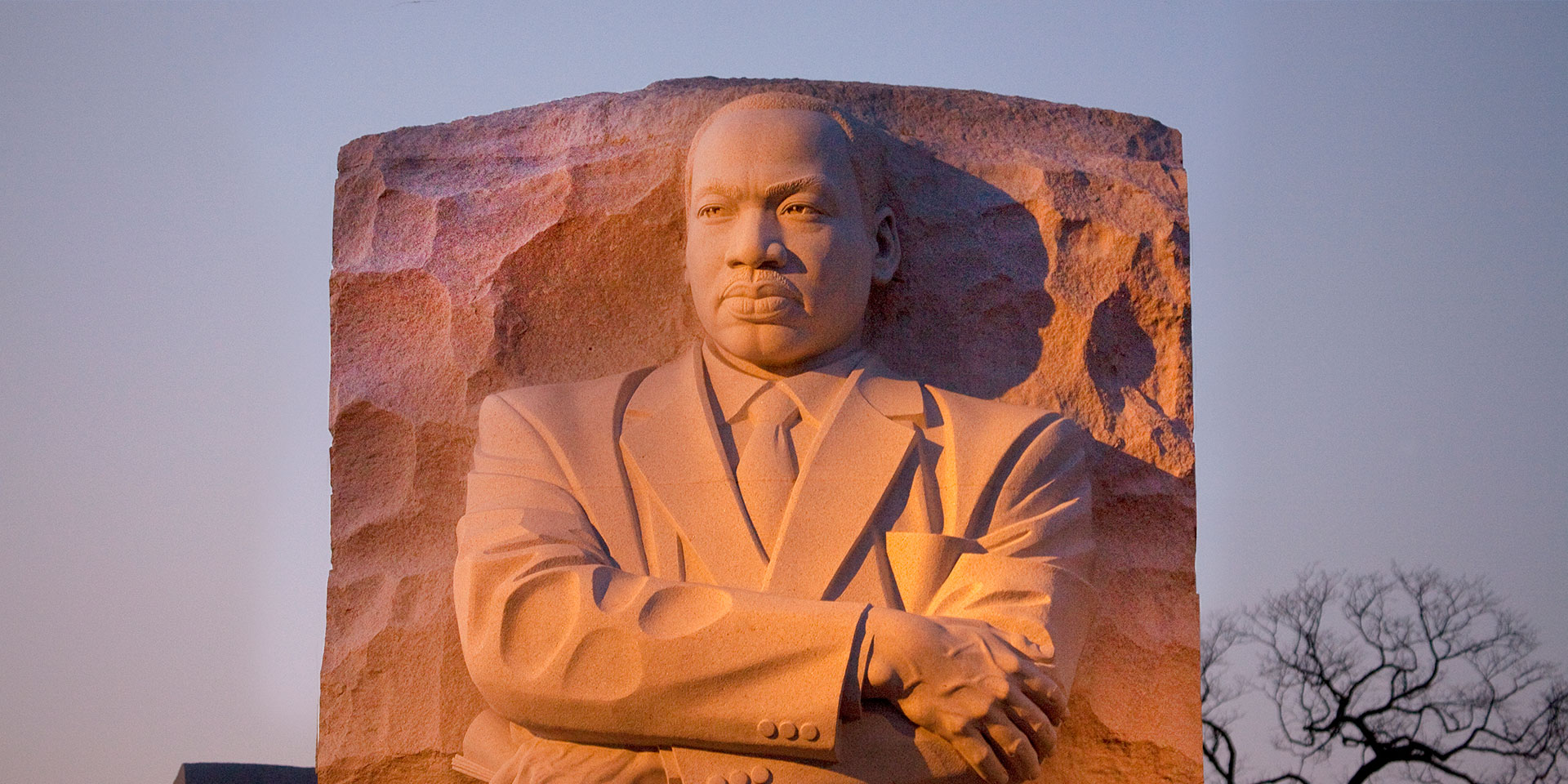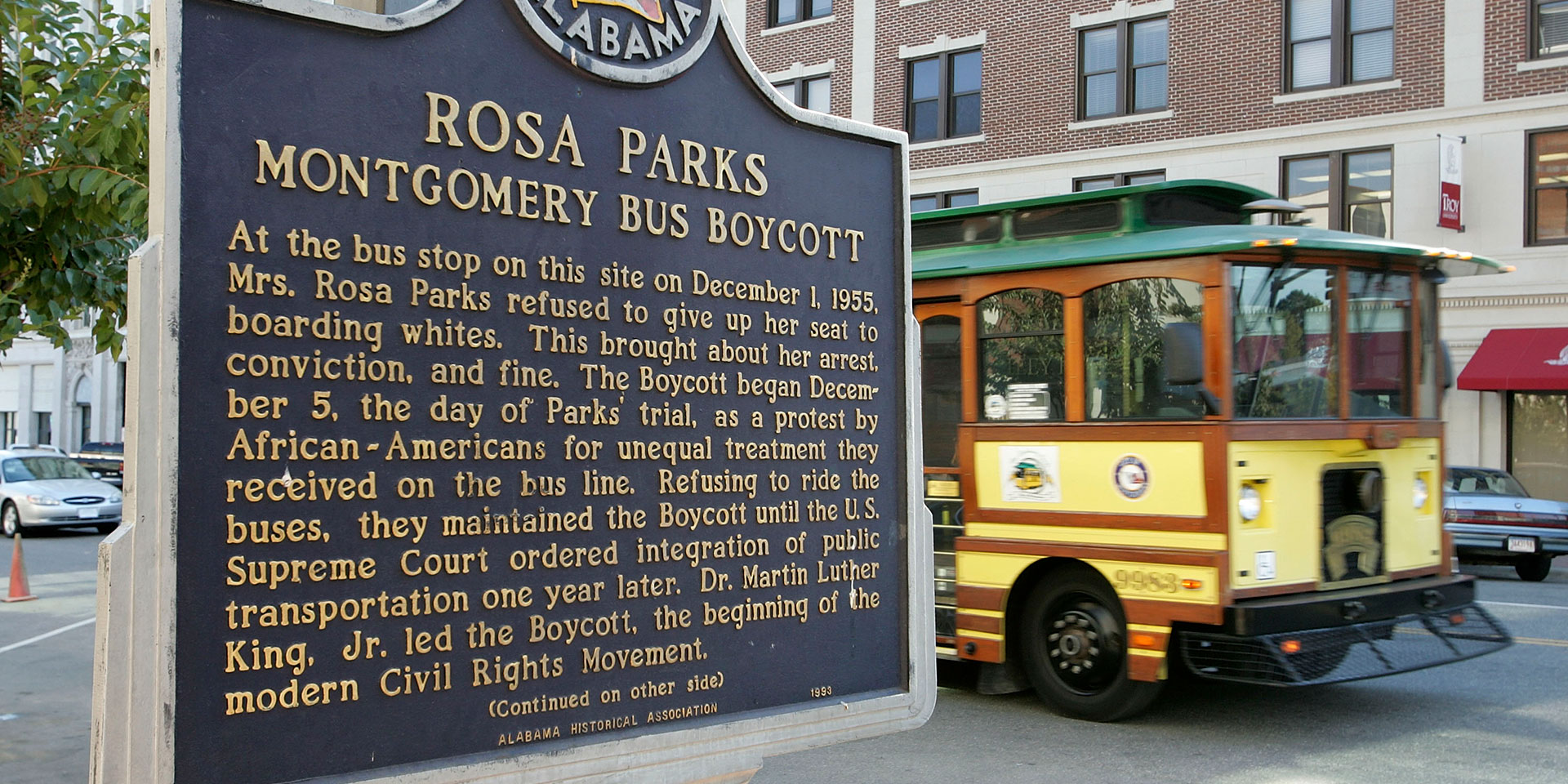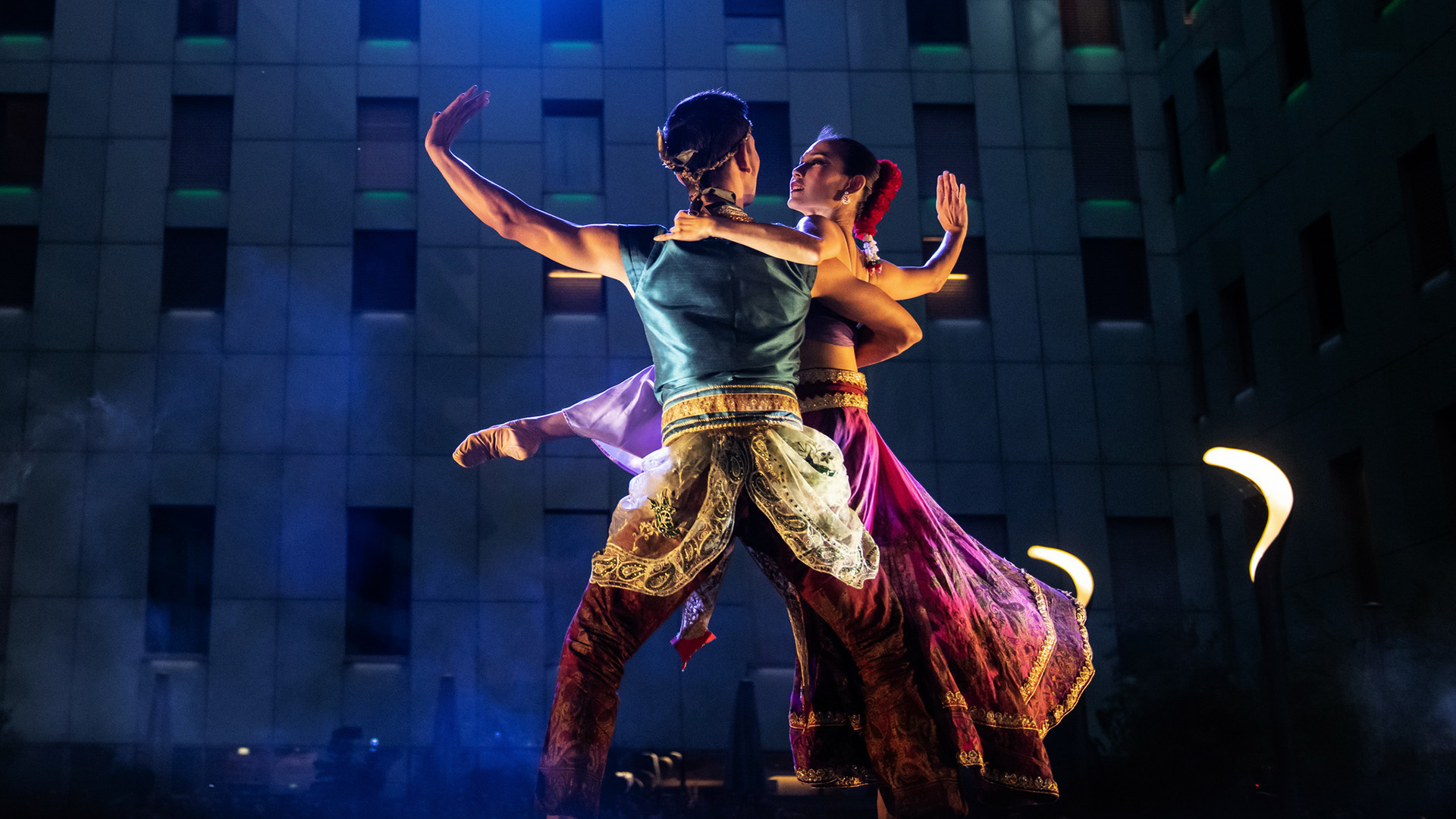
The Martin Luther King Jr. Memorial is located in Washington, D.C.’s National Mall.(Photo: Getty Images)
Culture + StyleFollow in His Footsteps: 10 Places That Shaped MLK’s Civil Rights Journey
By Sowmya KrishnamurthyCivil Rights icon Dr. Martin Luther King Jr. was assassinated on April 4, 1968. Celebrate his historic legacy with a trip to 10 places important to Dr. King’s life — as well to as the larger civil rights movement — in America.
450 Auburn Avenue NE, Atlanta
Dr. King was born on January 15, 1929, in Atlanta, Georgia. The National Park Service offers a ranger-led tour of the actual home on Auburn Avenue NE where he was born and in which he lived until the age of 12. The home tour is filled on a first-come, first-served basis on the day of the tour and is limited to 15 people. It is recommended that visitors arrive early.
Ebenezer Baptist Church, Atlanta
Religion was central to Dr. King’s life and beliefs. At the age of 5, his name was changed from Michael King Jr. to Martin Luther King Jr. after his father visited Germany and became inspired by Christian reformer Martin Luther.
The Ebenezer Baptist Church is where King Jr. was baptized. He gave his trial sermon there at 19 and was ordained and remained the pastor there until his death. The church was placed on the National Register of Historic Places in 1975.
Morehouse College, Atlanta
At 15, King enrolled at Morehouse College. He worked with the city’s Intercollegiate Council and wanted to be involved in promoting racial equality. He told Time magazine in 1957, “As I got to see more of white people, my resentment was softened, and a spirit of cooperation took its place. But I never felt like a spectator in the racial problem. I wanted to be involved in the very heart of it.”
Boston University
King enrolled in graduate school at Boston University in 1951. “He was a struggling doctoral student who was a normal guy — even a bit of a playboy. He joked around, he dated — he was a man about town with a new Chevy,” John Cartwright, Martin Luther King Jr. professor emeritus of social ethics at Boston University and a contemporary of King’s at Boston University, told the Boston Globe.
It was here that the young philosophy student was exposed to the work of Gandhi, which inspired his own movement of nonviolent resistance. He would eventually get his doctorate in systematic theology from Boston University in 1955.
New England Conservatory of Music, Boston
Boston proved important in King’s personal life, as well. In 1953, he met fellow student Coretta Scott, who was enrolled at the New England Conservatory of Music. She would become his wife and an integral support system for his work and his legacy.
According to The New York Times, King said on their first date, “The four things that I look for in a wife are character, personality, intelligence and beauty. And you have them all.”
The South End, Boston
While in Boston in the 1950s, King lived in the city’s South End district (the intersection of Massachusetts and Columbus avenues).
At the time the area was known for a thriving cultural scene, with jazz clubs, pool halls and restaurants where black and white patrons gathered. Musical greats like Count Basie and Duke Ellington performed at venues like Slades, the Savoy and Hi-Hat. One such venue, Wally’s, still remains.
Montgomery, Alabama

King’s rise as a civil rights leader largely took place in Montgomery, Alabama. On December 1, 1955, Rosa Parks was arrested for refusing to vacate her seat and move to the back of a city bus to make way for a white passenger in the city.
Four days later, the Montgomery Improvement Association (MIA) — a group of black ministers and community leaders — was formed with Dr. King at its helm. The group was integral in guiding the boycott of buses and shining national attention on racial segregation in the South.
On November 13, 1956, the Supreme Court ruled that bus segregation was unconstitutional. Visitors can learn more about the Montgomery bus boycott at the Rosa Parks Museum.
The Lincoln Memorial, Washington, D.C.
In 1963, nonviolent protests grew, and Dr. King joined some 250,000 people in the March on Washington for Jobs and Freedom.
The peaceful rally was the largest in national history. On August 28, 1963, Dr. King gave his most famous speech at the Lincoln Memorial. The “I Have A Dream” speech was an impassioned plea for equality and love and is still cited as one of the most powerful speeches in history.
Edmund Pettus Bridge, Selma, Alabama
The Civil Rights Act of 1964 forbade discrimination in voting on the basis of race, but many in the South still faced discrimination when heading to the polls. In 1965, Dr. King and others took on the issue of voters’ rights with the 54-mile Selma to Montgomery March.
Shortly after the march left Selma on March 7, Alabama state troopers attacked peaceful protestors trying to cross the Edmund Pettus Bridge.
The nation watched in horror as protestors were beaten and hit with tear gas by authorities in what was called “Bloody Sunday.” Following rising tensions and national coverage, President Lyndon B. Johnson pledged his support for the protest and the introduction of new voting rights legislation.
On March 21, some 2,000 demonstrators, protected by the National Guard, crossed the bridge. Four days later, nearly 50,000 supporters gathered to hear Dr. King speak in Montgomery.
As a result of the march, the Voting Rights Act of 1965 was signed into law by Johnson months later.
National Civil Rights Museum, Memphis, Tennessee
On April 4, 1968, Dr. Martin Luther King Jr. was assassinated while staying at the Lorraine Motel in Memphis. Dr. King was planning a march amid receiving ongoing death threats. King told colleagues, per Time magazine, that he was not afraid. “Maybe I’ve got the advantage over most people,” he said. “I’ve conquered the fear of death.”
He walked out of his room, 306, and was shot while standing on the balcony. The 39-year-old was taken to a local hospital and was pronounced dead within an hour. The nation — and world — mourned.
Today the motel houses The National Civil Rights Museum. Visit the museum to learn about Dr. King’s legacy as well as to hear stories about the many heroes of the civil rights movement.







